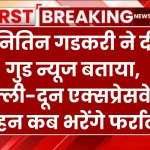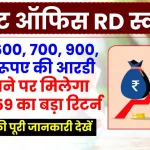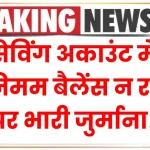
Budget 2025: The Union Budget 2025 is approaching, and taxpayers are eager to understand whether Section 80C deductions and the Standard Deduction will continue to be part of the New Tax Regime. Since its introduction, the new tax regime has been positioned as a simplified alternative, but it lacks many deductions that taxpayers have relied on for years.
As we analyze the potential changes, this article will cover:
- The key differences between the old and new tax regimes.
- Whether 80C deductions will make a comeback.
- The future of the standard deduction.
- How to choose the right tax regime for your financial situation.
- Insights and expectations for Budget 2025.
Budget 2025
| Feature | Old Tax Regime | New Tax Regime |
|---|---|---|
| Section 80C Deductions | Available (Up to ₹1.5 lakh) | Not Available |
| Standard Deduction | ₹50,000 | ₹75,000 (as per Budget 2024) |
| Tax Slabs | More deductions, but higher tax rates | Lower tax rates, but fewer exemptions |
| Likely Budget 2025 Changes | Possible hike in 80C limit | Uncertain but unlikely to include 80C |
As Budget 2025 approaches, taxpayers must decide whether Section 80C and the Standard Deduction impact their tax planning. While 80C remains unavailable in the new tax regime, the standard deduction has been retained and increased. The new tax regime is designed for simplicity, but potential changes in Budget 2025 could further influence taxpayer choices.
To make the best decision, consider your income, investments, and potential tax savings under both regimes before choosing the most beneficial option.
Understanding the New Tax Regime
Why Was the New Tax Regime Introduced?
The government introduced the new tax regime in Budget 2020 to offer a simpler, exemption-free taxation system. The idea was to allow taxpayers to pay lower tax rates without the hassle of calculating deductions and exemptions. However, this meant removing several key deductions, including:
- 80C deductions (Investments like PPF, ELSS, NSC, life insurance premiums)
- 80D deductions (Health insurance premiums)
- HRA (House Rent Allowance) and LTA (Leave Travel Allowance)
- Home loan interest deductions (Section 24b)
How Does It Differ from the Old Tax Regime?
The old regime allowed taxpayers to reduce taxable income by claiming deductions, but it came with higher tax rates. The new regime simplifies the process but removes most exemptions, making it more suitable for those who do not invest heavily in tax-saving schemes.
Example:
- A salaried employee earning ₹10 lakh annually can claim ₹1.5 lakh under 80C and ₹50,000 standard deduction under the old regime, reducing taxable income to ₹8 lakh.
- In the new regime, the flat tax slab applies without deductions, meaning the taxable income remains ₹10 lakh.
Will Section 80C Stay in the New Tax Regime?
Currently, 80C is not available in the new tax regime, and experts believe it is unlikely to be included in Budget 2025. However, taxpayers have consistently demanded its return to encourage savings and investments.
Possible Changes in Budget 2025
- Higher 80C Limit: The government may consider raising the 80C limit beyond ₹1.5 lakh under the old regime.
- Partial 80C Benefits: There is a possibility that certain long-term investment exemptions (like NPS or EPF) could be selectively allowed under the new tax regime.
- Continuation of No-Deduction Approach: The government may prefer to retain the simplified structure of the new tax regime, keeping it free from exemptions.
Standard Deduction: Will It Stay in the New Tax Regime?
Unlike 80C, the standard deduction has been included in the new tax regime. Initially absent, it was added in Budget 2023 at ₹50,000 and increased to ₹75,000 in Budget 2024.
Why Was It Retained?
- It provides tax relief to salaried employees and pensioners.
- It aligns with the principle of simplicity while offering a modest benefit.
Expectations for Budget 2025
- The government may increase the standard deduction further, possibly up to ₹1 lakh for salaried individuals.
- It is highly likely to remain part of the new tax regime, as it is one of the few benefits still allowed.
Which Tax Regime Should You Choose?
Old Tax Regime Suits You If:
You invest heavily in PPF, NPS, or insurance.You claim HRA, LTA, medical expenses, and other deductions. You prefer a lower taxable income with deductions.
New Tax Regime Suits You If:
You don’t invest much in tax-saving schemes. You prefer simpler, lower tax rates without paperwork. Your employer does not provide HRA or other allowances.
Genpact Announces Latest Hiring for Indian Techies—Here’s How to Apply! Check Important details
Indian Army Jobs 2024: Indian Army Hiring with ₹2 Lakh+ Salary – No Exam Needed!
Frequently Asked Questions About Budget 2025
1. Can I switch between tax regimes every year?
Yes, salaried employees can switch annually, while business owners face more restrictions when changing tax regimes.
2. Will Budget 2025 bring back 80C in the new tax regime?
It is unlikely, but there is a chance that the government might allow certain investment exemptions.
3. Is standard deduction available for pensioners in the new tax regime?
Yes, pensioners can claim ₹75,000 standard deduction under the new regime (Budget 2024).
4. How can I decide the best tax regime for me?
Calculate your tax under both regimes using online tax calculators or consult a tax professional.
5. What other deductions are allowed in the new tax regime?
Besides the standard deduction, employer NPS contributions and EPF interest exemptions are still applicable.











